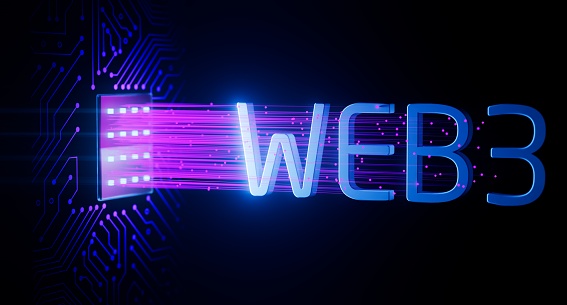For the first time in its history, blockchain and cryptocurrency technology entered the mainstream in 2021. This was mostly brought on by the growing acceptance of non-fungible tokens (NFTs) and the idea of Web3.
The social media era has dominated the past ten years of internet growth (also known as Web 2.0). However, there has recently been a drive to further alter the internet. By granting users more control over their data, this is achieved, additionally by utilizing the potential of numerous blockchain networks, which open up new web functionalities and business models.
Web3 has been hailed as an entirely novel approach to considering how internet users might communicate with one another. Its supporters assert that it will be able to address a number of significant problems with everything from social media to internet shopping.
Web3: What is it?
Web3 is currently more of a marketing gimmick than anything else. Even some of the loudest supporters of the technology still have trouble articulating exactly how the internet’s new age will play out in the years to come.
However, virtually every explanation of Web3 focuses on a few common areas. Applying blockchain technology and other cryptography-related building blocks is the core notion behind Web3. This will establish a new structural foundation for web applications that emphasize decentralization.
Web3 is, in many ways, a response to the extensive control that powerful tech giants like Facebook and Google have over their users and the internet as a whole.
Web3 Purchasing: Beginning
Users’ entry point into Web3 apps will probably be a crypto wallet of some form. With some form of decentralized digital identity, users of this wallet are able to do everything from making payments to logging into web applications. Private keys for users’ digital assets, online identities, credentials, and possibly much more are stored in these wallets.
The most well-known wallet available today is an Ethereum wallet called MetaMask. Additionally, it may function with other cryptocurrency networks that make use of the Ethereum Virtual Machine (EVM).
These days, decentralized finance (DeFi) or NFT-focused apps that run on Ethereum are primarily accessed using this kind of crypto wallet. Many IT experts believe that this method of interacting with web apps will eventually spread to all other parts of the web.
The hope is that ease of use will significantly increase over time, even though the typical individual probably still finds these kinds of crypto wallets a little too complicated to use at the moment.
What is Web3’s potential for e-commerce?
Online shopping and ecommerce are two aspects of Web3 that have attracted the interest of blockchain aficionados. The original purpose of Bitcoin was to transform internet payments.
However, Web3’s potential can transform much more than just how individuals make online purchases of goods and services.
The good news is that the Web3-enabled buying experience won’t feel all that different from how shopping already operates after someone has a crypto wallet loaded in their laptop’s browser or on their smartphone. In actuality, many Web3 applications may be easily integrated into well-known online storefronts like Shopify and WooCommerce. The transition from credit cards to cryptocurrency and the Web3 shopping website development era is already underway.
NFTs might be very important in the growth of this field. NFTs are distinctive digital tokens that users save in their cryptocurrency wallets. They can represent a wide range of physical or digital objects.
NFTs on Web3 Shopping
Let’s use the SHOPX platform as an example because it provides a selection of NFTs for retailers to give to their customers.
An NFT-powered SHOPX functionality is called ReserveX. For new products that are sold on an internet store, it functions as a kind of ticketing or voucher system. When new products are sold online in restricted quantities as presales, there is a common issue. As soon as new limited-edition products are released, programmers will create bots to scour the web and find them.
The bot’s developer will later sell the new item for a profit on another platform. This implies that the actual consumers of the goods may end up having to pay more than they otherwise would. This is simply because one or more people were able to utilize bots to purchase the whole stock of the new product.
Brands can use ReserveX to sell or distribute digital vouchers in connection with drops of new items. Being able to take part in a presale or the launch of a new product is necessary under this scenario. This means that in order to make the purchase, the customer must have a ReserveX NFT. The goal is to establish a more equitable system that rewards loyal consumers of a brand rather than product thieves.
